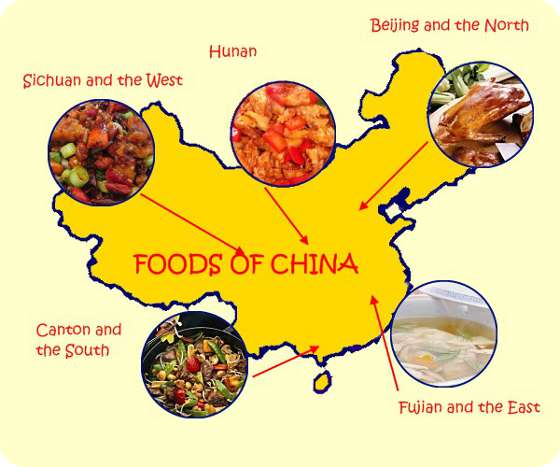Szechuan: the western cuisine
Szechuan, the largest province in China, lies in a vast, densely populated, and fertile basin surrounded by mountains. Its principal connection eastwards is through the spectacular deep, narrow gorges cut by the Yangtze River. For centuries, due to its geography, the Yangtze River was the province's only means of communication with the outside world. Szechuan, in literal Chinese translation, means "Four Streams" and refers to the four main tributaries of the Yangtze River, which flows through the province.

With its sub-tropical, warm, and humid climate providing fertile soil, crops can be grown almost all year round, making Szechuan one of the most prosperous and economically self-sufficient regions of China . This area has been viewed by many as China in a microcosm and is often perceived as a country within a country. The Chinese call the Szechuan basin, "Tien Fu Chih Kuo", which literally means "Heaven on Earth."
Rice is grown in the summer, harvested in the late fall, and replaced by wheat to be harvested in the spring. Fruit, bamboo groves and vegetables grow in abundance, as well as edible mushrooms and fungi, such as wood ears and the silver fungi. Spices grow plentiful here too, particularly chilies and the famous Szechuan peppercorns.
Szechuan food is best known for being hot, and spicy. Chilies, which are indigenous to the region, are used in great quantities in dishes, and are the most striking feature of Szechuan cuisine. The use of chilies comes from a popular regional belief that eating spicy food induces profuse perspiration that keeps the body cool, which in turn helps expel the toxins in the body and keeps one healthy. Another is that the "heat" from chilies and spicy food stimulate one's palate to be able to indulge the different tantalizing flavors presented in Szechuan cuisine.
Spiciness is not the only distinguishing feature of Szechuan cuisine. It utilizes the different textures of wide varieties of ingredients to produce chewy and crunchy dishes. Pungent flavored vegetables such as onions, garlic, and green onions are used frequently. It also takes advantage of the aromatic, nutty flavor of cashews, walnuts, pine nuts, and sesame seeds by incorporating them into dishes. The peppers lend an immediate fiery, numbingly hot, sensation to the food. But once this initial phase passes, an array of flavor of sweet, sour, salty, and bitterness asserts itself. Sesame paste is often the principal ingredients in sauces, although the use of sauces in Szechuan cuisine is not common, as the many dishes are fried and tend to be drier. Szechuan is also known for its food preservation techniques, because the warm, humid climate makes it difficult to keep food fresh. Salting, drying, smoking and pickling are popular methods used by households.
A neighboring province of Yunnan, is worth mentioning here. It lies in the far southwest, a mountainous and secluded region, and served as a cultural bridge between China , India , and Burma. With it being geographically isolated from the rest of China , Yunnan developed over the years as a highly distinctive cuisine of its own. Its best known delicacy is the ham, which many consider the best in the world. It is also noted for its game, such as rabbit and venison, and it is the origin of exotic menu items such as bear's paws, snakes, snails, and slugs.
Next, in part 3 of the 4 part series, we will cover Shanghai (Chekiang-Kiangsu): the eastern cuisine.
Editor's Note: Helen Fan grew up in a family that has owned various Asian restaurants all over North America, from Vancouver (Canada), Houston (Texas), Decatur (Illinois), to Chicago (Illinois). She, and the rest of the Fan family are now sharing their decades of knowledge on the art of Chinese cuisine at Chinese Home Cooking.
